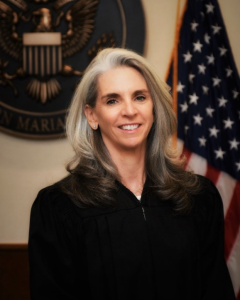‘Unmanaged growth hurts CNMI’
Unmanaged growth is detrimental to the CNMI.
That’s according to a Hong Kong-based consultant of the Marianas Visitors Authority.
Horwath HTL, a leader in hospitality consulting, told MVA members during yesterday’s general membership meeting that unmanaged growth might jeopardize the overall ability of the CNMI to compete in the tourism industry in the long-term.
That’s the sobering conclusion of a feasibility and sustainability study conducted by of Horwath HTL on tourism development in the CNMI.
Presenting the results of a SWOT analysis (Strength, Weakness, Opportunity, and Threat analysis) to MVA members, Horwath HTL director Darlena Zhai said the CNMI’s strengths are its pristine beaches and natural environment, which is why tourists go out of their way to get to the islands.
“The CNMI has a relatively short travel time to key markets such as Japan, Korea, and China compared to Southeast Asian destinations. Air access improved significantly over the past years. In China, the CNMI has done better than other destinations in significant growth of outbound travel and future potential,” said Zhai.
The weaknesses of the CNMI are more of a renovation problem. Zhai said in her presentation that most hotels on Saipan are in dire need of renovation, even more so now that the hotels are operating at a high capacity since the tourism industry is experiencing a boom.
“With these challenges, we feel that it is going to be difficult for the CNMI to compete in the longer term because the beauty of this destination has attracted a lot of demand in a short period of time. With [dated] products, we need to stay competitive, otherwise we see the CNMI losing its competitiveness relative to the new products coming up in the region,” she said.
Citing statistics provided by Zhai, Korea and China grew from about 68,000 and 32,000 tourists to over 200,000 respectively in a span of just 10 years, which Zhai believes has displaced a lot of Japanese tourists.
The overall lack of planning for future development in the CNMI as a whole also hurts the destination.
“There isn’t as much a destination identity as compared to other destinations and there is a lack of lifestyle support tourism facilities,” she said.
Zhai even touched on the local workforce problem, saying the ongoing CW issues hold back the prosperity and development of the CNMI.
Opportunities and threats
Zhai cited numerous threats to the CNMI. According to her, resources that are not catching up to speed of new developments are hindering the overall development of the CNMI as a destination.
Unmanaged growth also threatens the CNMI because it does not allow the “loss of utilization” of natural resources on the islands, she said.
The hot topic of immigration wait lines to enter the CNMI was also mentioned. Zhai said the two main issues that must be addressed to further tourism development in the CNMI are the long immigration lines and the renovation of infrastructure and accommodation establishments.
“Just to highlight, we’ve a lot of online reviews by people that have visited Saipan and they have all cited the arrival experience as the least favorable part of the trip,” she said.
Zhai said that, according to their research, tourists mentioned at least one to two hours of waiting time to get through immigration, with some reaching four to five hours.
“This is a pressing issue—one that needs to be addressed immediately before travelers start to [get a negative notion] of the CNMI,” she said.
Zhai believes the economic boom in the CNMI means there is sufficient funding to improve local infrastructure, which she believes is much needed to entice tourists to come back.
The CNMI will also need to keep up with untapped markets. She said “freely independent travelers” are currently trending with other markets that are similar to the CNMI, such as Thailand’s Koh Samui and the Republic of Maldives.
Recommendations
According to Zhai, tourists now share their immigration experiences on social media,
“To accommodate the [influx of passengers], everything—including the airport, power, water, and waste management—need to be expanded to fit the scale of new arrivals,” said Zhai.
Zhai compared the Francisco C. Ada Saipan International Airport to the airports in Guam, Maldives, Phuket (Thailand), and Bali (Indonesia). According to Zhai, the terminal footprint of Saipan International Airport is similar to that of the CNMI’s visitation level, at about 20,000 visitors. Zhai concluded that the long wait line is not due to airport facilities but rather due to long processing times at immigration.
“Because of the process here, additional offices or machines would be the solution to try and reduce the amount of time travelers spend to get through immigration. This is something that needs to be addressed immediately,” reiterated Zhai.
Zhai touched on the current lodging facilities and emphasized their need for renovation. According to her, unlike city destinations, accommodation is the most crucial thing for resort destinations such as the CNMI.
“Most of them are in dire need of renovation, especially considering they are operating at 97 percent [capacity] and because a lot of years have passed since the facilities have been updated,” she said.





The mañana syndrome blooms in perpertuity convinced that the triad of sun, sea and sand is sufficient! Other destinations in nearby Asia including Japan have gone on a binge improving their products!
It appears to me at least that MVA paid their contracted travel consultant for information they already know, i.e, to always keep clean its pristine beaches a surrounding waters, hotel rooms in tip top shape, the long wait line for arriving tourists especially in the wee early morning hours with their little ones. For goodness sake, you guys at the MVA board, aren’t you all are aware of these existing realities and that you needed a consultant again now, yes again, to reinforce something which you all know to start with? Come on you big wigs, got to start using your thinking cap by keeping in mind that precious dollars don/t grow on trees and to not be spending it unnecessarily or frugally.
Did we really need to pay an outside consultant to know that? Just ask the Zoning Board / CRM Board lawyer. Duh.
No